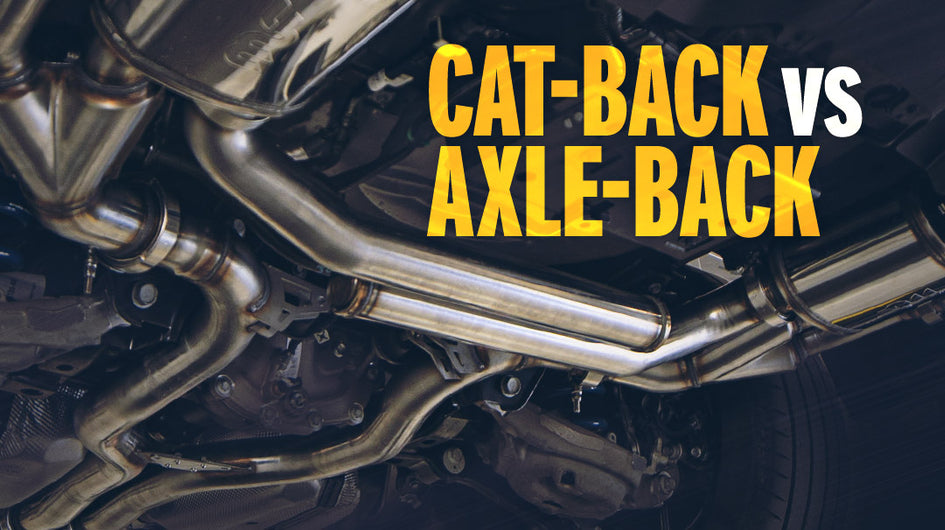Upgrading your vehicle’s exhaust system is often considered a rite of passage for automotive enthusiasts. Among the myriad options available, two systems frequently spark debate: the axle-back and cat-back exhaust systems. While both promise enhanced performance and an auditory tapestry that can transform your driving experience, they cater to distinct needs and preferences. So, which is right for you? Let’s dive into the nitty-gritty of axle-back versus cat-back exhaust systems to help you make an informed decision.
To begin with, it’s essential to understand what these systems entail. An axle-back exhaust system replaces the exhaust components from the rear axle to the exhaust tips. In contrast, a cat-back system encompasses everything from the catalytic converter to the exhaust tips, offering a more comprehensive upgrade. This delineation is crucial as it impacts not just performance but also sound and installation complexity.
Let’s talk about performance first. If you’re looking for marginal gains in horsepower and torque, an axle-back exhaust might tickle your fancy. These systems are usually less labor-intensive and can provide a noticeable reduction in weight compared to stock exhausts. However, if you crave a substantial increase in overall performance and efficiency, the cat-back system is the clear frontrunner. By increasing the diameter of the piping and optimizing the flow of exhaust gases, a cat-back setup drastically enhances engine output, making it a top choice for performance-oriented drivers.
Sound is another facet that sets these systems apart. Imagine cruising down the highway with the low, throaty growl of an aftermarket exhaust. An axle-back system can deliver an aggressive sound, especially if you opt for performance-oriented mufflers, while still maintaining some level of civility for daily drivability. It’s an auditory upgrade that can make your vehicle sound sportier without the total commitment of a full cat-back system.
However, if you’re a fervent aficionado of a robust, sonorous exhaust note that commands attention, the cat-back exhaust will likely satiate your appetite. The enhanced performance footprint allows for a more profound sound, often described as aggressive yet refined. Think visceral growls and melodic harmonics that reverberate through the cabin. Cat-back systems usually come with larger diameters and improved muffler designs, culminating in a symphony of sound that can turn heads.
Installation complexity is a critical consideration when deciding which system to install. Axle-back systems are generally simpler, as they often involve bolting on directly to existing mounts without needing to alter or remove complicated components. This feature makes them ideal for those who prefer a quick weekend project or are relatively new to vehicle modifications. By contrast, cat-back systems can pose a greater challenge due to the necessity of removing more components and possibly modifying the vehicle’s structure. While it may require a more extended time investment, many enthusiasts find the end result justifies the means.
To further complicate the decision-making process, consider your budget. Generally, axle-back exhausts are more affordable, ranging from a few hundred to several hundred dollars, depending on the brand and material choice. If you’re tightening your purse strings but still desire an upgrade, this option provides ample value. Conversely, cat-back systems usually come with a steeper price tag, but keep in mind that you’re often investing in superior materials, build quality, and extensive sound enhancements.
But price isn’t everything. Longevity and durability are crucial. Cat-back systems, crafted from higher-quality materials, often exhibit superior resilience to the elements—like rust and corrosion. Stainless steel, for instance, is a common choice in cat-back systems, ensuring that the exhaust maintains its functionality and aesthetic appeal for many years. If you live in an area where roads get salted in winter, a high-quality cat-back system can prove beneficial in warding off deterioration.
You might also have to consider legal implications when upgrading your exhaust. In some regions, local regulations dictate noise levels and emissions, which can affect your choice. Axle-back systems often meet these regulations more easily, while cat-back systems could push your vehicle beyond legal noise thresholds. Be sure to familiarize yourself with state and local laws to avoid unpleasant run-ins with law enforcement.
Ultimately, the choice between an axle-back and a cat-back exhaust system boils down to your individual goals and preferences. If you want an affordable, easy, and visually appealing upgrade that modestly enhances sound and performance, then an axle-back might be the answer. However, if you’re ready to make a significant investment for a substantial performance upgrade, a cat-back system could transform your driving experience, elevating it to levels you never imagined.
In conclusion, both axle-back and cat-back systems bring distinct advantages to the table. Each option caters to different needs—whether it’s for a subtle enhancement or a radical transformation. Consider your performance goals, sound preferences, budget, and installation capabilities before making a decision. By carefully weighing these factors, you can ensure that your exhaust upgrade will not only enhance your vehicle but also invigorate your driving experience for many miles to come.
